Menu
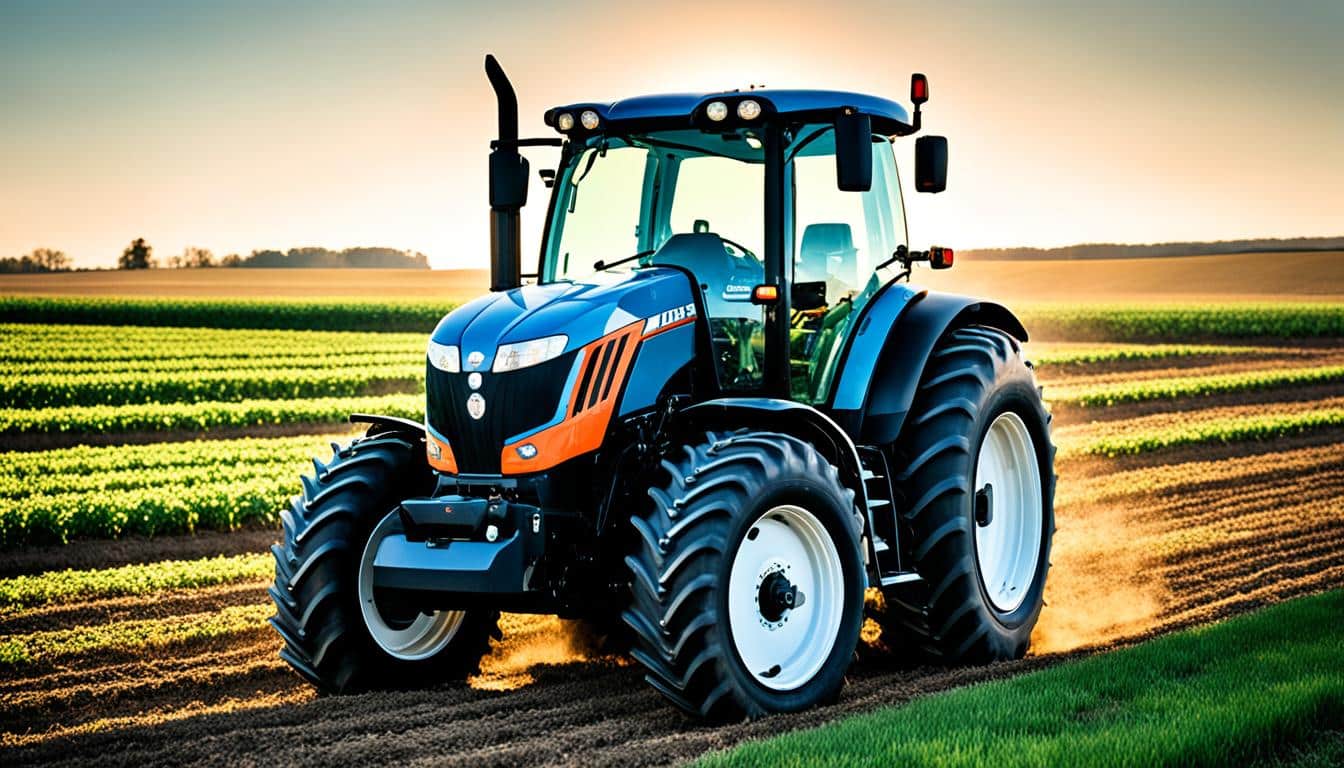
Did you know that power tillers in Thailand aren’t standardized? This lack of uniformity causes major issues for farmers. Even though Thailand is a big player in global agriculture, and its mechanization has grown quickly, there’s still a big need for better-designed farm tools.
In particular, tasks like primary cultivation in wet, Thai rice fields are super strenuous. The heavy work demands strong, well-designed equipment. Efforts to improve the ergonomics of farm tools are vital.
The market is full of locally made equipment. They are more than 95% of what farmers use. But because these tools vary, they often don’t fit the farmer well. This mismatch causes extra physical strain. So, there’s a big push to collect detailed data on what Thai farmers need in their tools.
This data includes measurements of their bodies, how much they can lift, and how hard they can work. Such info is key for designing tools that are easier and safer to use. Already, experts have suggested many ways to make farm tools more ergonomic in Thailand. This effort shows the path we must take.
Ergonomics in agriculture helps make work easier and reduces strain on the body. It aims to cut down fatigue and make farming tasks less painful. This is done by designing farming tools that fit the human body well.
Ergonomics studies how people interact with their work environment efficiently. In farming, it means creating tools and machinery that match how the human body naturally moves. The main aim is to boost work without causing injuries. Every year, around 160 million people get ill from their work, with many facing musculoskeletal disorders.
Ergonomics is crucial for those in agriculture, facing a high risk of injury and health problems. A large portion, including both workers and their bosses, suffer from issues like low back pain and neck disorders. Properly designed farm tools can cut down on these problems by encouraging better body posture and reducing repetitive strain.
Ergonomics is key to designing farm equipment that supports the body well. It lessens pain and increases work rate. For example, tools like smaller grape harvesting tubs and long-handled hoes for weeding help keep workers healthy. This type of design doesn’t just aim to prevent immediate injuries but looks out for the long-term health and efficiency of farmers too.
| Year | Injuries | Illnesses | Deaths |
|---|---|---|---|
| 2000 | 337 million | 160 million | 2.3 million |
| Condition | Employees | Employers | |
| Low Back Pain | 51% | 47% | |
| Neck Disorders | 35% | 30% |
Learning about and using ergonomics in farming equipment is vital for a good agricultural sector. It leads to safer work environments and better health for farmers. This not only boosts farm productivity but also supports the well-being of those working in agriculture.
Modern agricultural equipment often falls short in design. This affects farmers’ health and how much they can do. There’s a big need for better ergonomic design in farming tools.
Farmers face tough physical challenges because of their work. They often get sprains, strains, and back pain. This happens a lot because their work involves a lot of bending, lifting, and turning. Back pain is much more common for farmers than in other jobs.
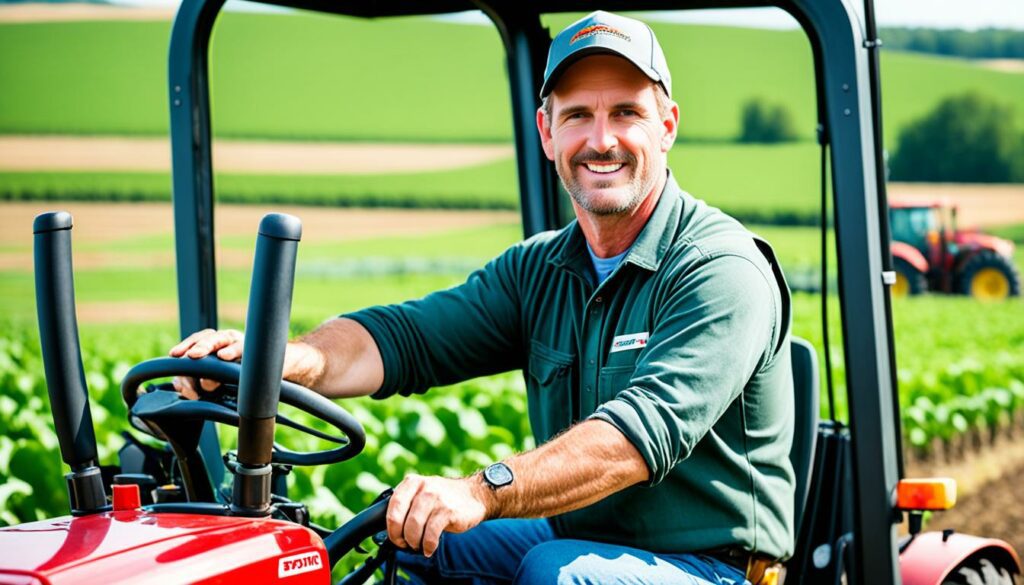
A lot of farmers reach out to AgrAbility for help with things like getting onto tractors. This is especially hard for those dealing with health issues like arthritis or back injuries. Age and physical strength loss can make these tasks even harder.
Sadly, a lot of farming machines don’t consider the farmer’s health well. The result is more injuries and a tough impact on farmers’ lives and work.
Thankfully, steps, handrails, and lifts can be added to make equipment safer and easier to use. For those with health issues, special mechanical lifts can help them get onto the machines safely.
But, picking the right modifications is key. You need to think about how easy it is to use, how often it’s needed, its condition, and how safe it is.
And there are ways to take care of your joints and avoid injuries too. This is important for farmers to stay healthy and keep working for a long time.
AgrAbility PA is there to help with ergonomics for those in the agricultural field. They offer advice and checks to make equipment more accessible. This support is crucial for farmers and workers with disabilities.
Using ergonomic agricultural equipment design changes farmers’ lives for the better. It tackles the tough physical effects of farming. These effects can cause injuries and health problems over time.
Farming’s hard work can hurt the body, leading to issues like back pain and sore arms. A 2001 study by the National Institute for Occupational Safety and Health found such problems are common for farmers. By making simple changes, like adding handles to totes, we can cut these aches by up to 20%. This barely affects productivity.
Also, using long-handled hoes for weeding means less bending over, which is better for the back. This approach makes farming both easier and healthier.
In 2024, the AgriSafe Network recommended using mats to fight fatigue from standing on hard floors. This simple step makes farm work safer. They also noted that tools should be close by and at easy heights to avoid unnecessary stretching, following a 2001 guideline.
Besides health benefits, ergonomic agricultural equipment design boosts how much farms can produce. Even small changes can cut down pain and increase work output by a lot. For example, making equipment 11 pounds lighter makes a huge difference. It helps workers feel better and keeps them working hard.
Using smaller tubs for grape picking doesn’t decrease productivity. Instead, it improves things. This way, ergonomic designs help farms achieve more without wearing out the workers.
A study from 2016 found that using the right tools can prevent carpal tunnel syndrome. Optimised equipment makes work easier and more efficient. This benefit reaches both the workers’ health and the farm’s bottom line.
| Benefit | Statistic | Source |
|---|---|---|
| Reduced Musculoskeletal Disorders | Up to one-fifth reduction in pain and symptoms | Meyers et al., 2006 |
| Increased Safety | Reduced fatigue with floor mats | AgriSafe Network, 2024 |
| Improved Efficiency | 2.5% decrease in productivity | Meyers et al., 2006 |
| Enhanced Comfort | Long-handled tools reduce trunk flexion | NIOSH, 2001 |
Putting these ergonomic ideas into practice makes farm life better. It makes work healthier, safer, and more productive. This leads to stronger farms both in terms of productivity and financially.
One key principle in designing ergonomic farm tools is understanding what farm workers need physically. This means we measure how strong and big they are. Then, we make sure the tools fit them well. This makes using the tools easier and safer.
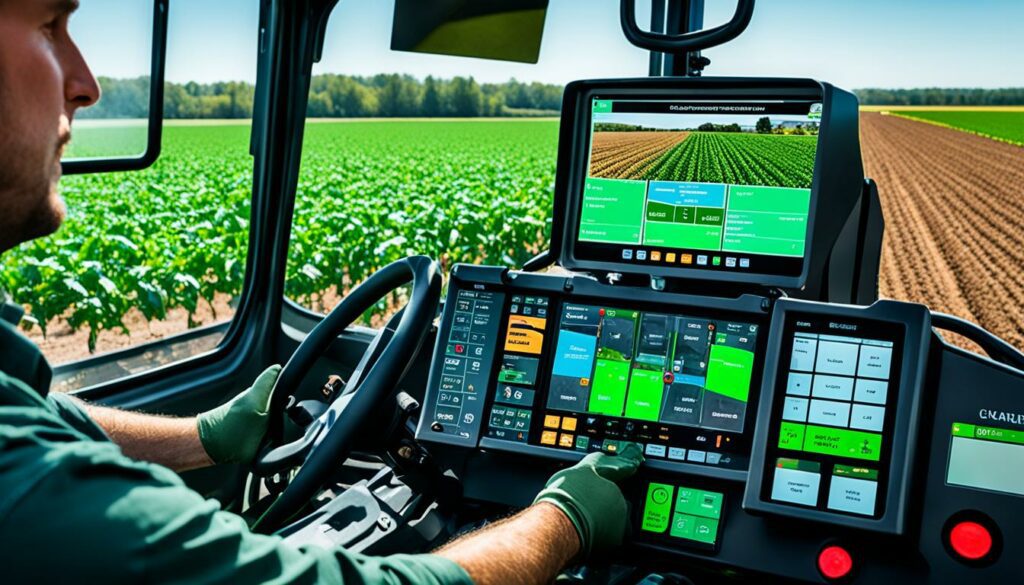
Getting details about the body helps design farm tools that anyone can use comfortably. For ergonomic tools, experts measure 79 parts of the body and 16 strength areas. These measurements help make tools that suit many different people. They cover sizes from the smallest to the largest, making sure everyone can use them well.
Farm tools are designed with different body types and strengths in mind. For example, people in India and North America may not have the same muscle power. So, tools are made to match. Things like how strong someone can grip, push, or pull are important. Even equipment like tractors is built with these specific needs in mind. They have to be comfortable and easy to use, so farmers don’t get tired too quickly.
Also, farmers in India have different needs compared to those in the West. Their bodies react differently to the work they do. That’s why tools need to be made just for them. This includes checking how fast their heart beats and how much oxygen they use. Using this information helps design tools that fit local farm workers perfectly.
| Body Dimension | Usage in Design |
|---|---|
| Hand Grip Strength | Designing handles for tools and equipment |
| Push/Pull Strength | Creating levers and controls for machines |
| Leg Strength | Developing foot-operated equipment |
| Body Posture | Adjustable seats and workstation heights |
This approach helps reduce body strain and boosts how much work can be done safely. Using ergonomic tools isn’t only about technology. It’s about making farming better for the workers and the environment.
Poorly designed farm tools can harm farmers’ health. These tools often cause injuries and strains. It’s key to know about these problems to make farm work safer and more comfy for all.
Farmers often get hurt, mostly hurting their muscles and bones. Each day, 167 farmers get hurt so bad they miss work. Between 2008 to 2010, half of crop worker injuries were sprains or strains, showing a big problem.
Back pain is a huge issue for farmers, worse than many other jobs. They suffer more than they should from muscle and bone issues. This can come from bending a lot, doing the same hand movements, and carrying heavy loads, like on the neck, arms, and shoulders.
Working with bad tools for a long time can cause lasting harm. It can lead to constant pain and injuries that never really heal. For example, bending a lot can hurt the back. Using vibrating tools can damage nerves in the hand and wrist.
Cold, wet places and not looking after tools make things worse. They can lead to even more injuries. Changing to better tools and smarter ways of lifting can help a lot. For instance, certain tools and ways of using them can reduce how hard the work is on the body.
Farming is one of the most dangerous jobs, and it’s tough work. Farmers can get badly hurt or sick because of their work. Making sure tools are designed well is crucial for their health and future in farming.
The use of new farming technology is changing the way we farm around the world. In Thailand, a great example shows how better tools are helping farmers. They’re focusing on making power tillers more comfortable to use in the main rice fields.
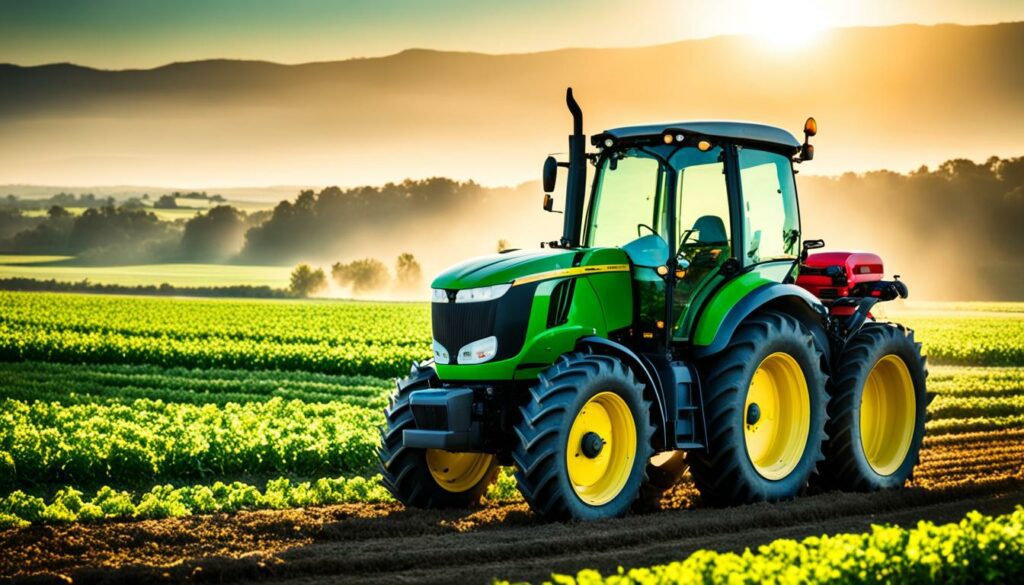
Thailand is working hard to make farm tools more user-friendly. The redesign of power tillers makes them more comfortable and less tiring to use. By looking closely at the size and shape of Thai farmers, they’ve designed tillers that fit better. This has cut down on back injuries a lot.
A study in 2016 found that 30% of back injuries at work were avoidable. This could stop people needing surgery. By putting a focus on making work tools fit better with our bodies, Thailand is leading the way in farm safety .
Learning from different kinds of work can help make farm tools even better. For example, improving tools in manufacturing cut down on worker injuries and made work more efficient. Farming can do the same by borrowing ideas from other areas like building things.
Deere and Company saw a huge drop in back injuries once they trained their workers on using tools better. This shows that good, smart tools can make a big difference. It’s worth spending money on tools like this because they save money in the long run. They often pay for themselves, like in the die cast plant study.
| Case | Benefit | Percentage Improvement |
|---|---|---|
| Die Cast Manufacturing | Reduction in Workers’ Compensation Costs | 93% |
| Deere and Company | Reduction in Back Injuries | 83% |
| Medical Call Center | Drop in Daily Complaints | 100% (from 4 to 0) |
The success in farming and other jobs shows how important good tool design is. These stories tell us we need to keep making tools that are good to use. This way, work is safer and nicer for everyone.
Modern farming machinery brings in several crucial ergonomic features. These boost both user comfort and safety. Their aim is to make farming more productive by ensuring farmers’ health.
One vital part of ergonomic design is adjustable seats and controls. They fit a wide range of body sizes, cutting down on tiredness. This makes working long hours easier and more efficient, suiting different operators.
These user-friendly farm tools are key. They take into account various physical abilities such as grip strength and arm reach. This means operators can work comfortably and effectively.
Lowering vibrations and noise is also critical. Excessive noise and vibration can harm the body over time. Modern machines are designed to reduce these issues, making work safer and more pleasant.
This focus on reducing harm is essential. It ensures that farmers can work without the risk of lasting injuries. Thus, they can use their equipment comfortably and safely.
| Key Ergonomic Features | Benefits |
|---|---|
| Adjustable Seats and Controls | Reduces strain and fatigue; enhances comfort for diverse body types |
| Reduced Vibrations and Noise Levels | Prevents nerve and blood vessel injuries; lowers risk of long-term discomfort |
| Safe Operational Parameters | Minimises injury risks; improves overall safety and operational efficiency |
| Enhanced Visibility | Provides better control and reduces operator errors |
Ergonomic farming machinery is about more than fancy technology. It’s about understanding what farmers need. This ergonomic agricultural equipment design is crucial. It ensures that machinery is efficient and friendly to use, helping farmers and the industry.
Lately, agrarian tech has made farming equipment better for farmers. AI and automation are now part of farm machines. They make the equipment work smarter. This means less hard work for farmers and fewer injuries.
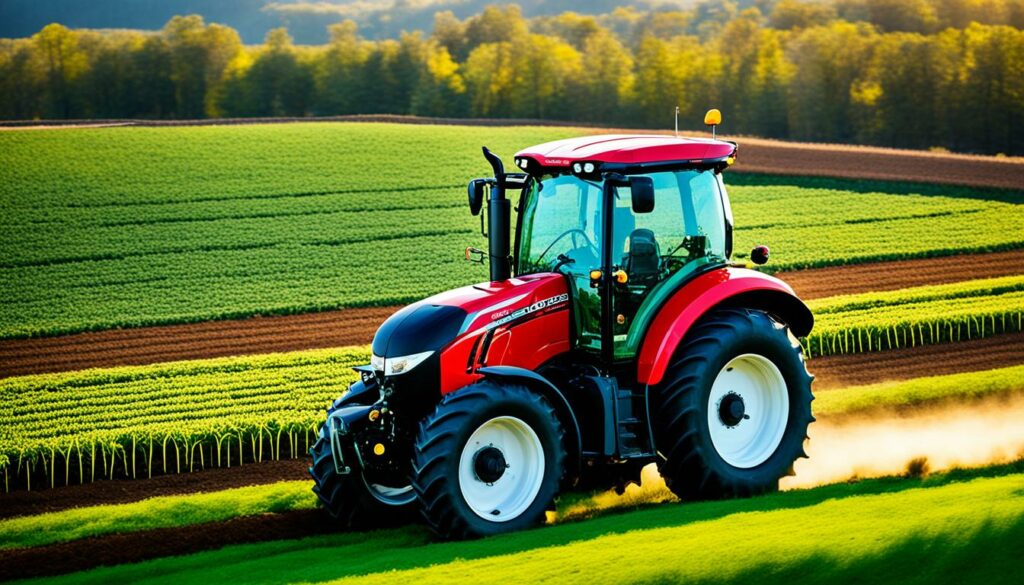
Artificial intelligence is changing farming. It makes machines do their job well without needing as much help from people. For example, machines that drive themselves or with a bit of help from a person use less of their muscles.
This is a big deal for making farm work easier on the body. With help from AI, machines can drive straighter and do their work better. This helps many tractor drivers who often get neck or back pain.
There are now devices that farmers can wear to see how their body is doing as they work. These gadgets check on different muscles and give feedback. This helps farmers work in ways that are less likely to hurt them.
A study looked at these devices used by men in their early 30s. They found that the guys moved better and more comfortably with this tech. It showed that these devices can make farming easier on the body.
| Driving Conditions | Muscular Activation | Operator Seat Pressure | Neck Symptoms Reported | Back Symptoms Reported |
|---|---|---|---|---|
| Manual | High | High | 24% | 64% |
| Semi-Automatic | Medium | High | 24% | 64% |
| Assisted | Low | Low | 24% | 64% |
When we talk about ergonomic agricultural equipment design, we face various hurdles. The main ones are the costs and the farmers’ hesitance to try new things. Tackling these issues carefully is key to introducing effective solutions.
Finding money for ergonomic farm machinery design is hard. This is because it costs a lot to make and buy. Small farmers might find these costs too high. But, it’s important to see that in the long run, these investments can lower injuries and make work more productive.
Take, for instance, using smaller tubs for picking grapes to make work easier. This simple change has already shown good results. But, it does ask for money upfront. That’s why support from funding and subsidies can really make a difference.
Many farmers are used to doing things the old way. They might not be quick to try new tools or methods that promise better health. Their doubts or their love for how they’ve always done it might slow progress.
A good approach is to involve the farmers in the development of efficient farming gear. By listening to what they need and showing how new technologies can help, we can change their minds. This approach can make the idea of using ergonomic solutions more appealing.
To wrap up, dealing with costs and convincing farmers to change are big steps in the right direction for ergonomic agricultural equipment design. By focusing on the benefits in the long term and working closely with farmers, we can make agriculture safer and more productive.
Using user-friendly farm tools makes farming easier and reduces the hard work. These tools are designed to improve comfort and help get more done on the farm.
Farm tools from companies like Green Heron Tools and Bahco aim to make work easier. An example is the HERShovel by Green Heron, which is light and fits different needs. The ARS Folding Pruning Saw is another light tool, great for lessening tiredness when used for long periods.
Motus introduced ergonomic grips inspired by old scythes. These grips help keep your joints in a safe position to avoid injury. Kay Winn says using these improved tools has significantly lessened her pain.
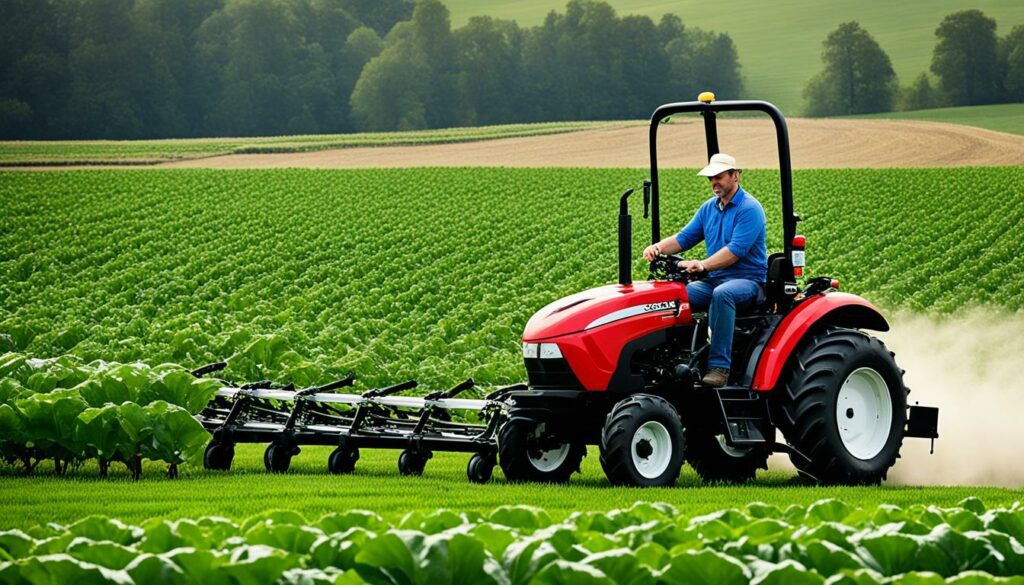
There’s more to farm gear than hand tools. Mechanical tools like the broadfork from Growers & Co. and path-makers from Meadow Creature save energy and suit different kinds of soil. The Growers & Co gardening rake, at 30 inches wide, is key for preparing the soil and spreading amendments quickly.
Devices like the flex tine weeder from Two Bad Cats and Johnny’s Selected Seeds show the power of smart designs. They boost productivity and make farming more sustainable while being easier on the body.
For smaller farms, the BCS 853 tractor with many attachments is essential. It helps complete lots of tasks with less effort. Using equipment like hoes for weeding decreases the physical work, which is better for the farmer’s health.
When working in very cold or very hot places, it’s crucial to have the right design for tools and equipment. A lot of injuries at work, about 29%, are due to working with tools that cause muscle and bone pain. This harms the economy and makes workers very unhappy.
In cold places like meatpacking factories, it’s easy to get hurt. You may not breathe well, lose some ability to move your hands, and get tired quickly. Tools and machines made for these areas should have warm grips. This makes them easier to use without hurting yourself.
Heat is also a big issue as it makes you very tired. But, smart design can help with this too. Machines should have special parts to absorb the shakes they make. Too much shaking can make your hands lose feeling and hurt, increasing injury risks.
Ergonomic designs are very important for farmers who work in all kinds of weather. These designs make machines easier to use, preventing injuries like carpal tunnel. This makes farm work safer and more effective, keeping farmers healthy and happy.
| Challenge | Ergonomic Solution | Impact |
|---|---|---|
| Cold Temperatures | Heated Handles | Enhances Comfort, Reduces Strain |
| Hot Environments | Vibration-Dampening Technologies | Decreases Fatigue, Mitigates MSD Risk |
| Prolonged Tool Use | Mechanical Assists | Minimises Forceful Movements, Prevents RMDs |
Putting good design into farm tools makes the job safer and easier. New technology is key to help farmers work better. It keeps them healthy and helps them produce more food. This benefits everyone in the end.
Government bodies and institutions play a key role in improving agricultural machinery. They make sure that new, better designs go to the farmers who need them most. By investing in research, they help create farming tools that are safer and more efficient.
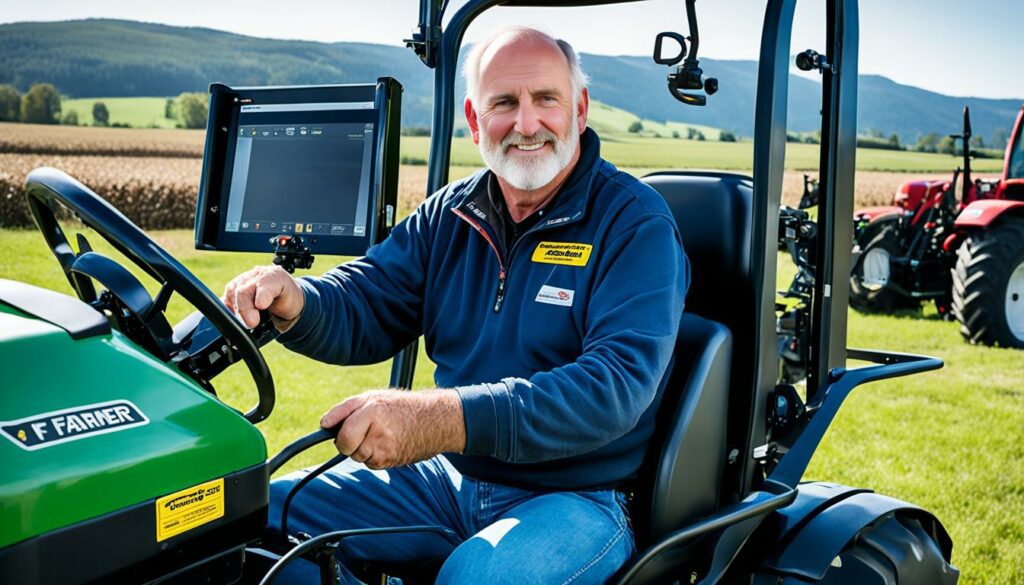
Governments help a lot by providing money for research and new projects. They fund things that make farming safer and better, like new tractor designs. For example, making tractor parts easier to use and more comfortable can prevent accidents.
Over half of all deadly tractor accidents happen because people don’t use safety features right. By designing equipment that’s easier to work with, fewer accidents occur.
It’s not just about the money, though. Farmers need to know how to use these new tools. So, there are training programs for them. These teach farmers the benefits of new machinery and how to use it safely.
These efforts create a better, safer workplace for farmers. It’s about making sure they understand and can use the new technologies effectively.
The future of designing ergonomic agricultural tools looks very bright. Many new ideas are coming that could change farming a lot.
More than sixty studies have looked at the safety of automatic farm machines. They all say how important it is that these machines see the world around them clearly. However, not much work has been done on making these machines safe and easy for people to use.
We are starting to add different kinds of eyes and ears to these machines. This includes things like 3D laser sensors and thermal cameras. The goal is to make farming machines work better and safer in all kinds of places.
New designs for farming tools will gain a lot from these new ideas. We already have machines like auto-sprayers and self-driving tractors. These will get even more common and helpful in farming. With more of these machines around, farmers will have to do less hard work. This will make farming easier and more productive for them.
Learning about and using ergonomic designs is spreading to all kinds of farming. We’re making tools that fit different people and situations better. This is possible thanks to data on body types from around the world.
We are also starting to pay more attention to how we design robotic farm workers. This includes machines that harvest crops. There’s a lot more to learn in this area.
There is a big push for new safety rules because of these changes. The old rules are not so good for the new farming machines. We need fresh ideas to keep up with the new technology.
This is all leading to a future where farming is safer, easier, and more productive. Everyone in farming, from the fields to the boardrooms, stands to benefit. The mix of new tech and ergonomic designs is shaping the next chapter of farming.
The importance of designing ergonomic agricultural equipment is huge. Agriculture ranks second in work-related injuries and illnesses. So, making equipment easier to use is a must to keep farmers safe.
Many farm workers suffer from musculoskeletal disorders (MSDs). Back pain and joint issues, like knee and hip osteoarthritis, are common. The work they do every day often leads to these health problems.
Simple, ergonomic changes can help a lot. Using smaller tubs for grapes and changing ladders reduce pains. Even tools like long-handled hoes and powered cutters make a big difference. They help work better, especially for those who might find it hard to work otherwise.
Looking towards the future, we need to use more ergonomic and smart technology in agriculture. This includes things like automation and AI. These can make farming more efficient and safer.
By focusing on designing equipment that’s good for the body, we help everyone on the farm. This creates tools and equipment that are not just easy to use but also comfortable. It keeps farmers healthy, safe, and more productive for the long haul.
Ergonomic agricultural equipment design is about making tools and machinery comfortable and safe for farmers. It looks at the user’s needs to reduce strain and prevent injuries. Safety and efficiency are key aims in creating these designs.
By fitting the equipment to the user, ergonomics makes work safer. It includes things like adjustable seats and easy-to-use controls. These reduce the chance of injuries and make work easier for farmers.
New agricultural technology like AI and automation lessens farmers’ physical work. Wearables track their health, helping avoid injuries. This technology also increases how efficient farming tasks are done.
It focuses on designing machines that match the farmer’s body. This care helps prevent health issues and raises productivity. It’s about making farming easier and healthier for those who do it.
Farmers often suffer from back pain and other health issues due to badly designed equipment. This machinery fails to meet basic comfort and safety needs. These problems impact their health and ability to work.
Good ergonomic design cuts down on physical stress when using tools. This lowers the risk of injuries, keeping farmers healthier. It helps them work without hurting themselves over time.
Ergonomic tools boost user comfort, reduce tiredness, and lower injury risk. They also help farmers work more efficiently and for longer periods. It’s about making the work feel easier and more comfortable.
Anthropometric data helps design tools that fit different body types. By doing this, it reduces the chance of wrong fit and injury. It’s about making sure equipment matches the farmer’s size and strength.
Bad ergonomics cause injuries like sprains, strains, and back pain. These injuries can have lasting effects, affecting both work and personal life. It’s crucial to prevent these by making tools match the user correctly.
In Thailand, ergonomics have improved power tillers. They now offer better comfort and working efficiency. This example shows how ergonomics make equipment better for farmers in similar places.
Modern machinery should have features like adjustable seats and controls. Noise and vibration reduction add to the design. These aspects boost comfort, lessen strain, and cut down on injury risk.
AI and automation make machines do more of the work. This means less physical labour for farmers. It also makes tasks more precise and efficient, making equipment easier and safer to use.
The main challenges are the costs and getting farmers to use new ways. It’s important to show the benefits of ergonomic equipment over the long term, both for health and work.
User-friendly tools, with good grips and comfortable designs, make work easier. They reduce stress and tiredness, preventing injuries and helping work get done better and easier.
Equipment for extreme settings should include heated handles and tech to reduce vibration. These special features ensure tools are still easy and safe to use, even in tough conditions.
They can back ergonomic research with funding and by promoting education about it. This helps spread awareness and encourages the use of safer equipment on farms.
The future is bright with new AI, automation, and smart wearables. These innovations will keep making farm work safer and more efficient, caring for the farmer’s health in the long run.